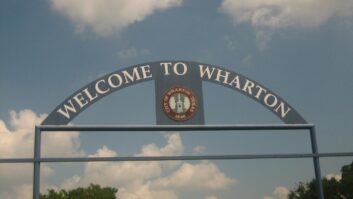WASHINGTON � The 2,000 or so U.S. AM radio stations that rebroadcast on FM translators now have more flexibility in locating those FM signals.
�
The Federal Communications Commission today expanded the site limitations where translators can rebroadcast AM stations. This change was expected, having been discussed in the ongoing AM �revitalization� initiative, of which new Chairman Ajit Pai has been a vocal advocate.
�
The National Association of Broadcasters welcomed the rule change. Pai thanked the Media Bureau�s Audio Division, naming Jim Bradshaw, Peter Doyle, Tom Nessinger, and Lisa Scanlan for their work.
�
It was only about eight years ago that some AM stations were first given the opportunity to obtain FM spectrum for translated signals, and the commission has been expanding the program in various steps, included giving 1,000 or so more stations the opportunity to acquire and relocate translators this past year � one of several changes it made to the AM rules made in late 2015, but the one that got the most attention by far. It believes the translator approach is particularly helpful to AMs that would not otherwise have a meaningful nighttime presence on the dial; and the commission is planning another round of applications this year, though a timetable is not yet firm.
�
But the translator program also has put more pressure on the FM dial, where recent new entrants also include traditional translators as well as the expanded low-power FM service. And it raised criticisms that giving AM stations an FM footprint has little to do with �revitalizing� AM but rather is more about broadcaster spectrum migration.
�
Pai has said he plans more work on AM: �We�ll keep working on ways to improve signal quality on the AM band and reduce AM broadcasters� operating costs,� he said in his remarks to the Future of Radio Audio Symposium last week. Asked for more details by Radio World, Pai indicated that those are in discussion at the commission but didn�t commit to a timetable. The 2015 commission action put forth several possible additional steps including modifications to AM protection rules; changes to rules for partial proofs of performance and Method of Moments proofs; and the surrender of licenses by dual expanded/standard band stations. Some of these are considered more controversial and raise questions including whether to retain longstanding protections enjoyed by certain high-powered AM stations at night. The commission at the time also mentioned longer-term ideas about the role of the expanded band and possible changes to the main studio rule.
�
This week�s change is much narrower. The change is to a rule that said an AM station could place a rebroadcasting FM translator within the smaller of its daytime service contour or the 25-mile radius of its transmitter. The new rule allows the translator to be located anywhere within the AM�s daytime service contour or within a 25-mile radius of the transmitter, even if the contour is farther than 25 miles out.
�
The FCC�s announcement stated the rationale this way: �The current rule proved too restrictive for some AM broadcasters, especially those whose transmitters were far from their communities of license. AM transmission systems require large amounts of land, and many AM broadcasters have been forced to relocate to sites far from the cities they serve, where land is available or affordable. The rule change today especially benefits these AM stations, and also helps other AM stations whose highly directionalized technical facilities currently limit the area where they can locate a cross-service FM translator.�
�
This article was originally posted on RadioWorld.com, sister site of Radio magazine.
�









